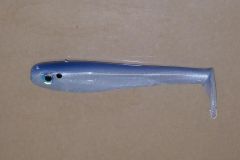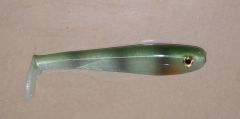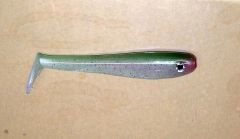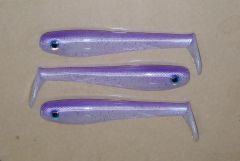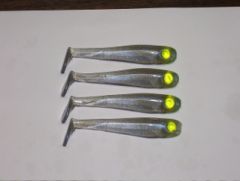
gunnie3035
TU Member-
Posts
648 -
Joined
-
Last visited
Content Type
Profiles
Articles
TU Classifieds
Glossary
Website Links
Forums
Gallery
Store
Everything posted by gunnie3035
-
Thanks, answers a lot of my questions. I think a tripod, light tent, and a camera w/better resolution is the answer.
-
What type of camera do you guys use to take pictures of your baits? And what is the best set up to get a quality picture? I've been toying with the idea of a digital camcorder so I could film some action shots of baits in the water OR should I go with a regular digital camera and use the video function? I'm pretty ignorant when is comes to cameras and computers so give me some suggestions....
-
Probably Shasta blackberry soda with a little Christain Brothers thrown in for extra carbs...
-
I don't get how someone could even suggest this is "basically a california swimbabe". The only thing they have in common is a paddle tail. This baby is a handcarved orginal. The company is Itchy Baits out of southern Utah. I believe they have a website and are awesome folks.
-
Ok, I'm going to cry about the other end of the spectrurm for a minute. These jokers selling items at below cost is killing everyone; $10 for 100 stick baits?? $6 for 10 7/0 weighted swimbait hooks?? To top it off they are shipping the item below cost too. I keep wishing they will go away, but when one leaves another one pops up.......
-
I hope the picture is ok, I'm mentally challenged when it comes to re-sizing/inserting photos. http://www.tackleunderground.com/photos/index.php?n=3608
-
I use the same cheap Wally World micro. I just prefer a rotary dial rather than a digital pad, but 7 minutes seems like a long time for 2oz plastic. I set the heat on med-high rather than high, I feel you get a more even melt on this setting. A real easy way to get rid of bubbles is to set the cup on a hot-plate [griddle] while you prepare the molds. The bubbles will rise and collect on the sides of the cup. Simply nuke it for another few seconds and your ready to pour bubble free plastic.
-
If your not pouring a boat load of molds I wouldn't buy a gallon of each. It does have a limited shelf life once it is opened. I'm not sure what the shelf life is, but I've let it sit for a month or so w/o any problems. I think they sell a pint sample pack for $22-$25. You can pour quite a few molds from the sample pack if they are not too thick.
-
I like the O-30 better. It gives you a little more time to throughly mix it. I never could get the 25 mixed well and still have it in a pourable state w/o air bubbles. Plus Oomoo is a 50/50 mix, none of this 1 cup to 6cc's nonsense. I'm not bright enough to follow those type of instructions.
-
zeiners maybe be a dollar or two cheaper, but they will scalp you on the shipping. M-F will treat you right...
-
I know I read a thread about glow in the dark powder some time ago, but I can't seem to find it. I've had some Delmart glow powder for a long time. Any idea how much glow powder you add to 1/2 cup of plastic, what colors glow best OR does it even work??
-
I don't know much about anything, but wouldn't a lightly weighted [3/32, 1/16oz] frog hook help keep the bait upright OR maybe a snap on the hook?? I know when I'm buzzing a swimbait sometimes a snap gives the bait enough freedom to stay on top rather than being pulled beneath the surface after the line soaks up water.
-
Depends on the size and color. Every normal tackle supplier carry some sizes and colors. But I order from about 3-4 different places depending on the size and color I need. I wish I could order all from the same supplier. Perhaps one day and I can move enough baits to order directly from WTP. Don't overlook Ebay for 3D eyes. Every once in a while a few will pop up at a real good price.
-
Yes, it is the design of that mold [tail]. It really depends on the action you want. If you use hardener or a stiffer plastic the swim will require a faster speed to get the same action you would get with softer plastic at slower speed. That bait is going to wobble no matter what, but a heavily weighted hook will slow it down somewhat. I feel the weighted hooks with the hitchhiker is a best option.
-
The belly cut is not from pulling the spoon out. It was intentionaly cut for whatever reason, the cut is too clean. It starts from 1/2" behind the nose to the tip of the paddle tail. I would think if it were torn from removing the spoon it would start back where the bait begins to neck down. It is a bigger bait so the hook set may be the reason? I'm reasonably certain these are Basstrix and not a counterfeit. Perhaps the belly cut is only on the larger baits. Seems like a lot of work for the finished product.
-
This is long.... I know this subject has been beat to death, but here is a little info that might be helpful for those dipping these baits. And perhaps someone can answer my questions. I finally bit and purchased some basstrix baits. Even though I have poured swims for a couple years I never actually held a basstrix in my hand. I'm not sure if this is applicable to all basstrix paddle tails or not, but the one I used was a 6" blue herring. I read all the posts and tried to keep up to date on these things, just in case.... My first immpression was wow, bubbles in the plastic, eyes are somewhat crooked, & paint is pretty sloppy. I probably wouldn't let a bait like this leave my shop if someone paid me $4 per bait. Anyway, I sacrificed one for the cause and cut it down the side. First let me mention the bait is slit from the nose down to the tail, similar to the old money minnows. This was puzzling because everything I read was the baits are dipped and the spoon is removed while the plastic is still warm. If this is the case then why is the bait cut from nose to tail. I always looked at these baits and wondered how the the dipping spoon was removed with the tail section being so thin. I didn't think it sounded right, but yet why cut it from nose to tail if all your doing is removing the dipping spoon. It was obviously cut before the final clear coats were added. It appears the base color was quite cool when the clear coat was added because the plastic pulled apart in layers. It looks like the spoon was dipped a minimum of 5 times overall at the nose section; 3 base coats, 2 of which went from nose to tail, and the third ended just before the paddle tail. The blue paint/dye/powder or whatever it is was then added before the 1st clear dip. At first I thought the blue paint was dip-it dye, but when I pulled it apart it rubbed off. It isn't vinyl paint, at least not any vinyl paint I'm familar with. It really looked like powder paint used for jigs. It was brushed on there manually, I'm pretty sure an airbrush was not used on the blue base coat. The bait was then dipped in a clear coat and painted again with the gold scales. The gold scales appeared to be the same type paint, but it didn't rub off as easily. The eyes were then added and another clear coat was added. Both clear coats went from nose to tail. The summary is on this bait is: the bait is dipped twice from nose to tail, a third time to the base of the tail, the blue paint was applied, a clear coat dip over the blue paint [entire bait], the scales are added along with the eyes, then another clear coat on the entire bait. The first 3 dips appear to be a softer plastic than the clear coats. So here are my questions; 1- why is the bait cut from nose to tail prior to the clear coat being added?? 2- This isn't the typical vinyl paint used on plastics, any idea what it is?
-
Dude, just buy a sample box of Oomoo 30 from Smooth-On. I think it is $22 for a pint of A&B. This should be enough to do what you need, if the molds aren't poured to thick.
-
I would personally go with the 30. I believe it is the same thing as the 25, but it doesn't set up as fast. The 25 will begin to thicken after 4-5 minutes, the 30 will buy you a little more pouring time.
-
Dry Creek Outfitters in Idaho make the best ones I have ever used. I believe they have a website now: www.drycreekoutfitters.com



